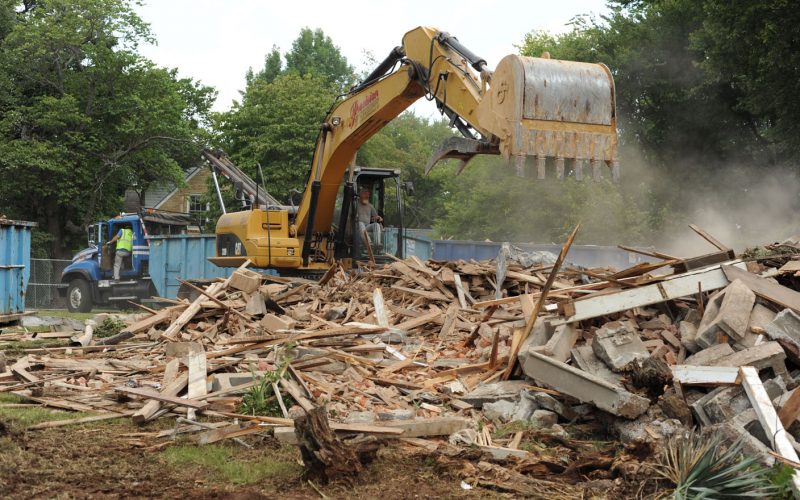Community discusses historic properties
STACY RYBURN
sryburn@nwadg.com
Preserving the city’s historic neighborhoods will take participation, coordination and education, about 50 residents agreed Feb. 5 during a public discussion.
The gathering took place at the community room of Ozark Natural Foods. City planners, administrators and experts in preservation went over options to keep the city’s historic homes and landmarks from being torn down.
Public engagement on the topic grew after last summer’s demolition of the nearly 150-year-old Stone-Hilton house at Lafayette Street and Willow Avenue. The city’s Historic District Commission began working with city planners on possible preservation methods.
The state already has the Historic Districts Act. Under the act, a local governing body, in this case the City Council, can pass an ordinance to create a local historic district. Any significant exterior alterations or demolitions within the district would first go under review.
The city also has provisions outlining preservation of local historic districts, although only one property falls under that category: the white hangar housing the Arkansas Air Museum at the municipal airport.
The city has five historic districts on the National Register of Historic Places — Mount Nord, Wilson Park, Washington-Willow, the University of Arkansas, Fayetteville campus and the West Dickson commercial district.
However, that designation is only honorary with no real regulatory teeth, said Ed Zimmer, historic preservation planner with the city of Lincoln, Neb.
“If you tear down a National Register property, you might go to hell but you won’t go to jail,” he said.
Several provisions must be met in order for a City Council to pass an ordinance creating a local historic district. A majority of the property owners have to consent. The Historic District Commission has to make a report on the historic significance of the properties. Copies go to the state. Public hearings follow. A final report goes to the City Council and if passed, the state has to certify.
The ordinance would create a local historic district, and anything beyond maintenance would have to go before the local Historic District Commission, said Catharine Barrier with the Arkansas Historic Preservation Program.
That’s what could be done now. The city can’t create its own rules regarding historic preservation because the state’s laws are complete, City Attorney Kit Williams said.
Williams suggested starting off small. A few properties within the Washington-Willow neighborhood could comprise a local historic district, for example, but trying to encapsulate the entire area under an ordinance would likely fail, he said.
The majority of property owners have to agree to subject themselves to the stipulations of a local historic district. Williams said attempts in the past to persuade a majority have failed.
“I think if we try to jump for the moon we’re going to end up missing again,” he said.
Resident Cynthia Christie said tear-downs are already happening at a rapid pace on the outlying areas of historic neighborhoods. There may not be enough time to start off small, she said.
“Money doesn’t wait,” she said.
Incentives also could encourage homeowners to keep those historic properties intact rather than build anew, participants said. An overlay district could guide property owners, some agreed, although it wouldn’t prevent demolitions. An overlay district applies architectural regulations to properties within a designated area on top of what’s already required under a zoning.
Resident April Streck, who said she has had success giving tours of historic properties, said the incentives could come from a nonprofit or organization. Education also goes a long way, she said.
“Instead of, ‘Hey, it’d be great to build this new thing here,’ let’s just preserve what we already have in the area,” Streck said.






